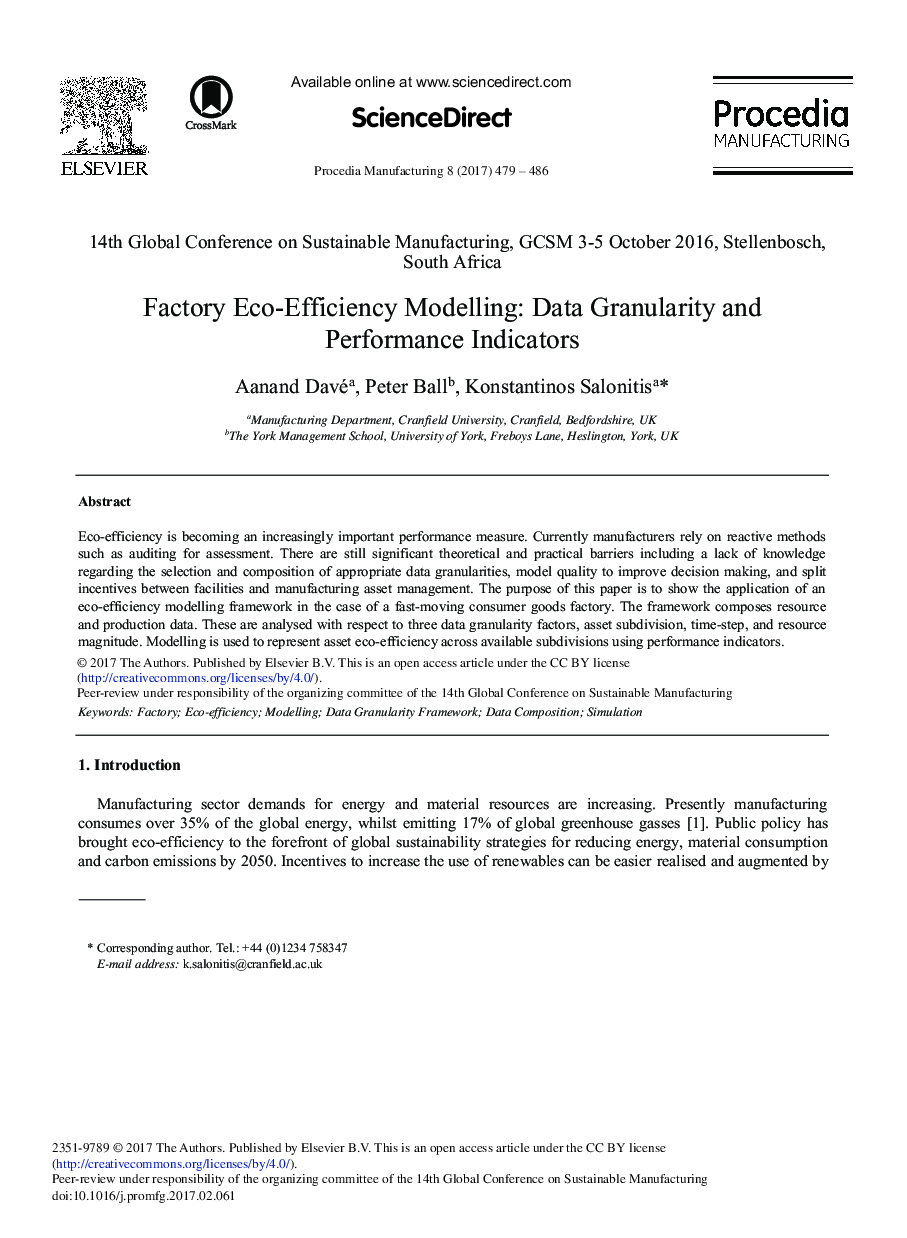| Article ID | Journal | Published Year | Pages | File Type |
|---|---|---|---|---|
| 5128960 | Procedia Manufacturing | 2017 | 8 Pages |
Eco-efficiency is becoming an increasingly important performance measure. Currently manufacturers rely on reactive methods such as auditing for assessment. There are still significant theoretical and practical barriers including a lack of knowledge regarding the selection and composition of appropriate data granularities, model quality to improve decision making, and split incentives between facilities and manufacturing asset management. The purpose of this paper is to show the application of an eco-efficiency modelling framework in the case of a fast-moving consumer goods factory. The framework composes resource and production data. These are analysed with respect to three data granularity factors, asset subdivision, time-step, and resource magnitude. Modelling is used to represent asset eco-efficiency across available subdivisions using performance indicators.
